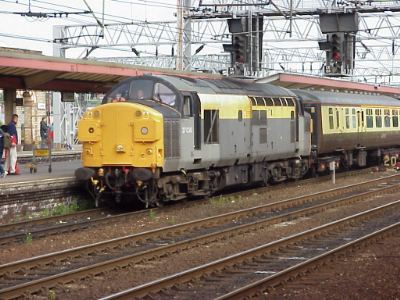
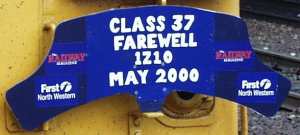
A PICTURE REPORT BY THE NORTH WALES COAST WEBSITE TEAM
with guest appearances by Jack Hardman and Chris Milner.
The Class 37/4 locomotives and Mark 1 and 2 coaches which have given good service on passenger trains in North West England and North Wales since the early 1990s are to be replaced by new Class 175 diesel railcars in Summer 2000, and two special trains were run on the weekend of 20/21 May to celebrate their life and times. The suggestion for these trains came from a chat some months earlier between Charlie Hulme and Tony Miles, and was enthusiastically taken up by the management of First North Western, with support from The Railway Magazine.
The first train, on Saturday 20 May, visited the North Wales Coast line and both its branches, staring from Crewe and travelling via Chester to Llandudno, Blaenau Ffestiniog and Holyhead before returning to Crewe via Chester, Altrincham, Manchester and Warrington.

As an added bonus, those of us travelling from the Manchester area were able to travel behind another Class 37, 37 038, as the 08.33 Manchester - Cardiff Wales and West train was loco-hauled in place of the usual Class 158 because of a Rugby match in Cardiff. Many people travelled on this train to Crewe, but not many looked like Rugby fans!
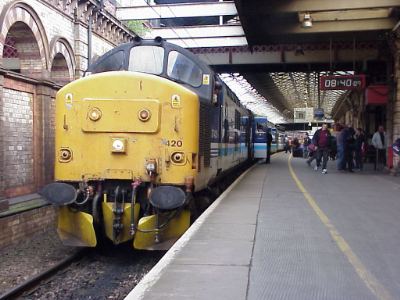
At the time the specials were planned, it was thought that Class 175s would already be in normal service, but in fact the old order still ruled. Passengers from the Coast were therefore able to reach Crewe aboard the 06.34 from Holyhead to Birmingham hauled by 37 420 The Scottish Hosteller, seen here on arrival at Crewe. The 09.17 from Crewe to Bangor, which ran half an hour ahead of the special train, was worked by 37 412 Driver John Elliott.
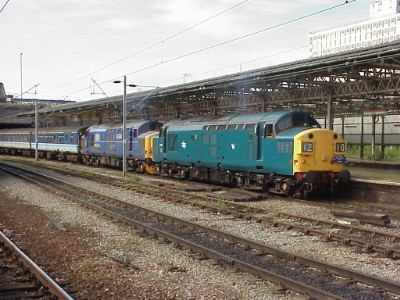
And here is the Farewell Special itself, train 1Z10, waiting in
Platform
12 at Crewe for its 09.40 departure. Locomotives are Riviera
Trains' 37
029 (note the West Highland Terrier sticker) and EWS 37
379Ipswich
WRD. The train itself was an eight-coach, a mixture of
Riviera Trains
and First North Western coaches.
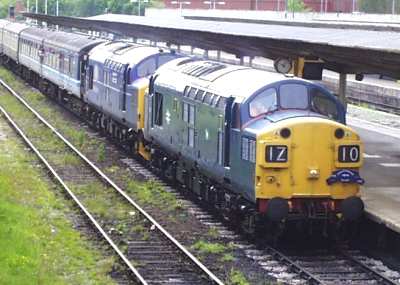
The train arrives at Chester ...
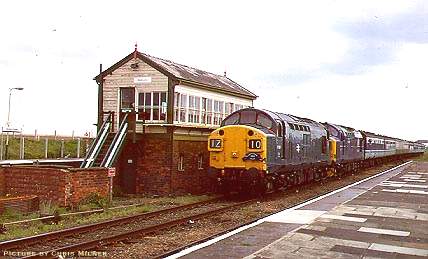
... At speed through the fast line at Abergele and Pensarn...
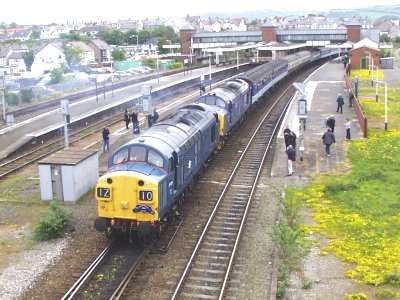
... and arrived in Platform 3 at Llandudno Junction, where two other locomotives, DRS 37 608 and 37 612, were attached to the rear for the journey to Llandudno and back.
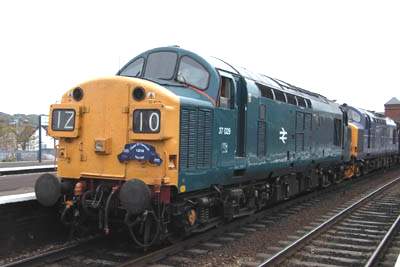
A portrait of 37 029 and 37 379 waiting to depart from Llandudno Junction.
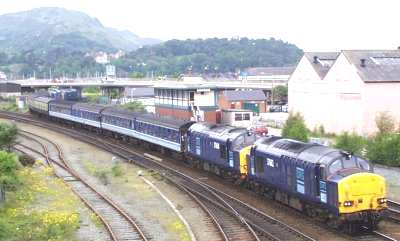
The cavalcade departs past Llandudno Junction signalbox and round the curve towards Llandudno.
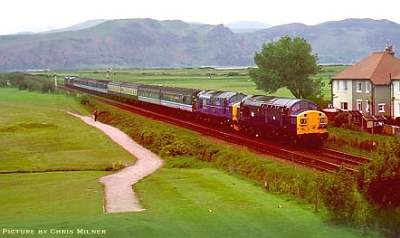
Heading down the Llandudno branch ...
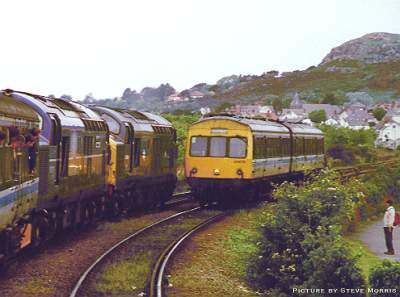
... passing a Class 101 on a local train ...
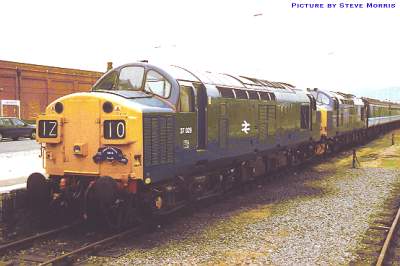
... and arrived at Llandudno. These two locos remained on the rear of the train until Llandudno Junction, where they were detached to run light to Holyhead.
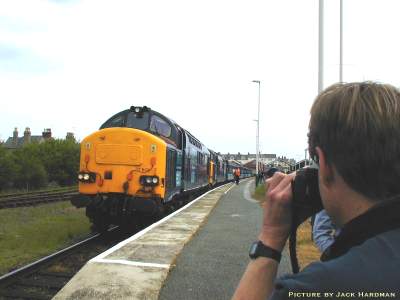
37 608 and 612 attract attention as they prepare to depart from Llandudno.
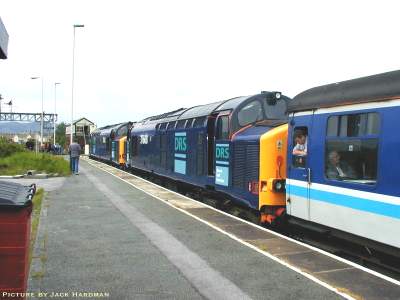
Llandudno station features an LNWR signalbox and the now-rare sight of a semaphore signal gantry.
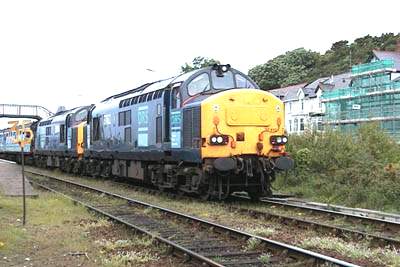
Passing through Deganwy, the one intermediate station on the Llandudno branch. The train came to an unexpected stand here: rumour had it that the AWS has been left turned on and therefore the train was stopped when the rear of the train passed an AWS magnet set at Danger!
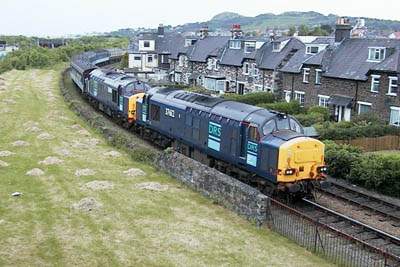
Two views of the train running round the curve back on to the main line at Llandudno Junction.
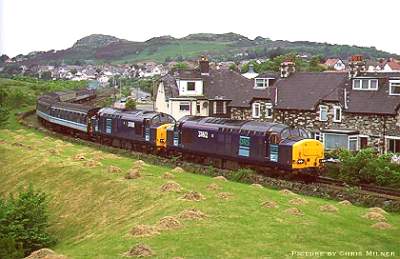
Part 2
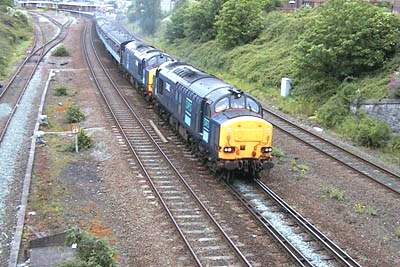
37 608 and 37 612 are hauling the train alone as it tackles the Conwy Valley branch to Blaenau Ffestiniog; here it takes the crossover road at the the branch junction.
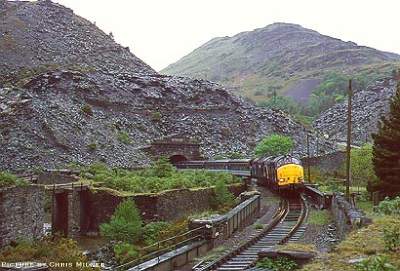
Emerging from Ffestiniog Tunnel into the unique landscape of Blaenau Ffestiniog.
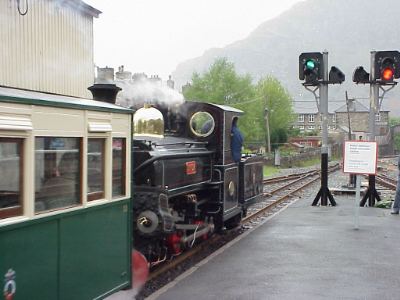
The Ffestiniog Railway side of the station: Hunslet 0-4-0 saddle tank Linda with the 11:55 from Blaenau Ffestiniog to Porthmadog. Originally built in 1893 for the Penrhyn Quarries Railway from the quarries at Bethesda to Port Penrhyn Bangor, she was transferred to the Ffestiniog in 1962.
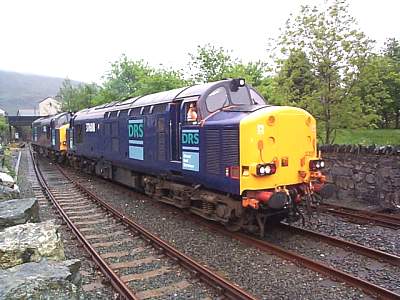
Running round the train at Blaenau involves running on to the line towards Trawsfynydd, which at the moment is out of use and has a buffer stop fitted to make it into a headshunt only.
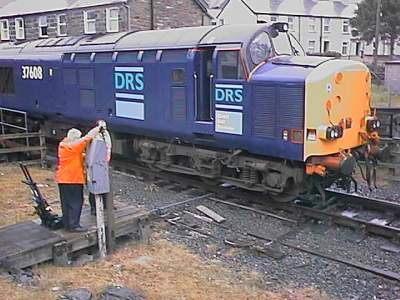
Whoever fitted the buffers had very carefully measured the length of two Class 37s, as they fitted beyond the points with less than a metre to spare.
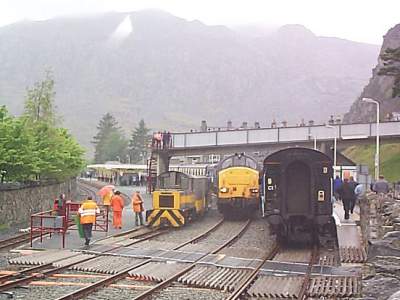
Running round the train, past a Ffestiniog Railway engineers' train hauled by an FR diesel ...
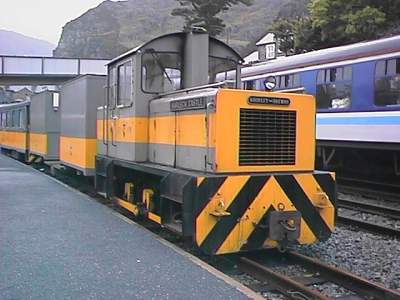
... Harlech Castle.
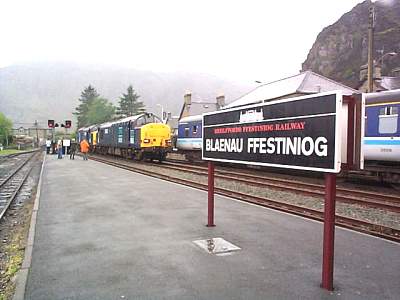
The weather this time was rather wet!
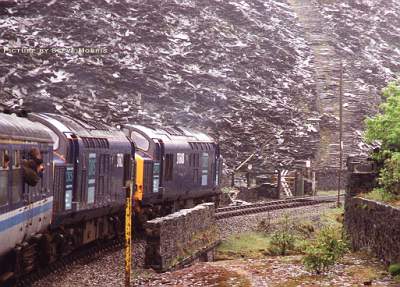
Heading back into Ffestiniog Tunnel
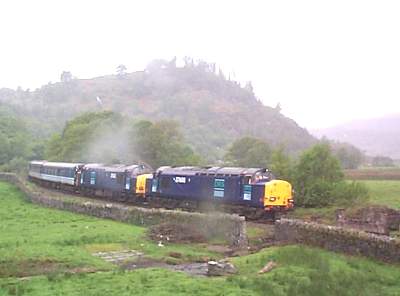
and passing Roman Bridge on the way back down towards The Junction.
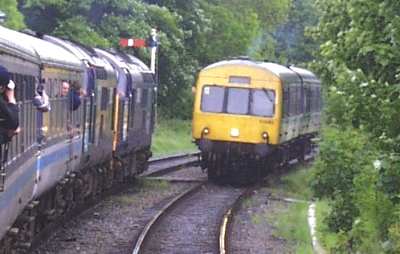
At Llanrwst North, we crossed a local train in the only passing loop on the branch.
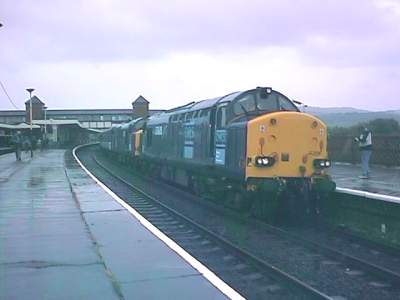
Back at Llandudno Junction, we brave the rain for a picture.
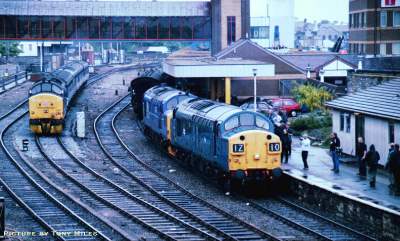
A quick trip to the road bridge at Holyhead to capture 37 379 and 37 029 backing on to the train, which they then worked for the rest of the day. The two DRS locos were uncoupled from the rear: the headshunt here at Holyhead is not long enough for two 37s!
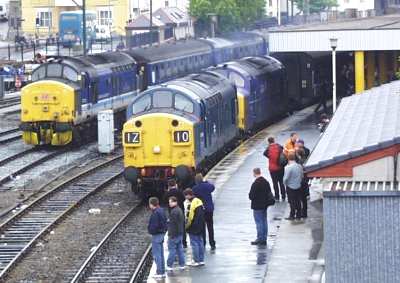
37 420 The Scottish Hosteller was also present at Holyhead, having returned from Birmingham, this train stables in the sidings here for the rest of the day on Saturdays. How often has Holyhead station seen five Class 37s at the same time?
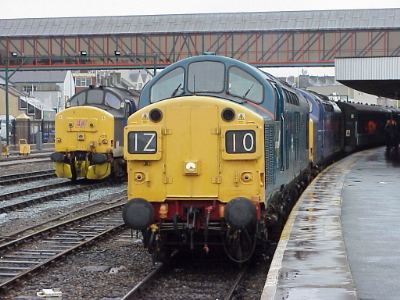
A contrast in front ends between 37 420 and 37 029. The Welsh
Dragon
has been added to 420 by the staff of Cardiff Canton depot.
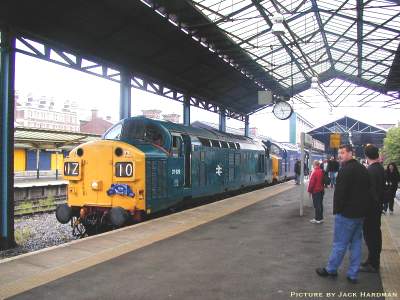
Back at Chester, after an uneventful run, the Welsh rain has played havoc with the specially-made headboard, but it was refurbished ready for next day.
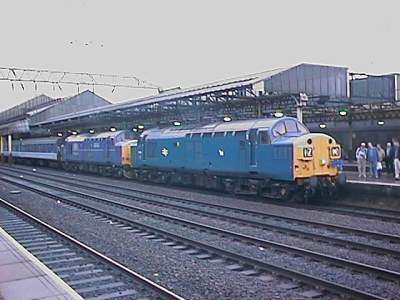
The train arrives at Crewe, on time - Manchester passengers were able to return home on the Rugby Special on its way home from Cardiff, with 37 038 again, running 25 minutes late.
Very special thanks to all at First North Western and Railway
Magazine
who organised this train - especially Tim Brawn, Tony Miles and
Iain Aldred
- to all the staff who operated it, and to Mr Franks for agreeing
to the
idea.